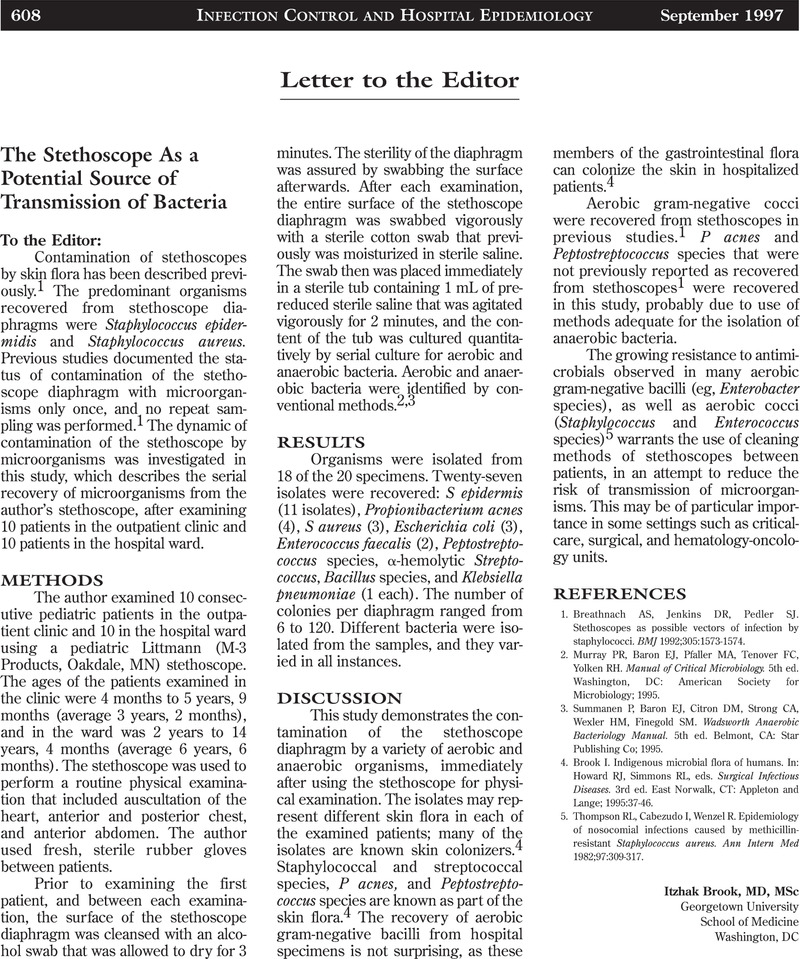Crossref Citations
This article has been cited by the following publications. This list is generated based on data provided by Crossref.
Chambonet, Jean-Yves
and
Cluis, Patrice
2004.
Enquête sur les mesures d’asepsie prises par les médecins généralistes.
La Presse Médicale,
Vol. 33,
Issue. 2,
p.
90.
Mehta, Aneesh K.
Halvosa, J. Sue
Gould, Carolyn V.
and
Steinberg, James P.
2010.
Efficacy of Alcohol-Based Hand Rubs in the Disinfection of Stethoscopes.
Infection Control & Hospital Epidemiology,
Vol. 31,
Issue. 8,
p.
870.





